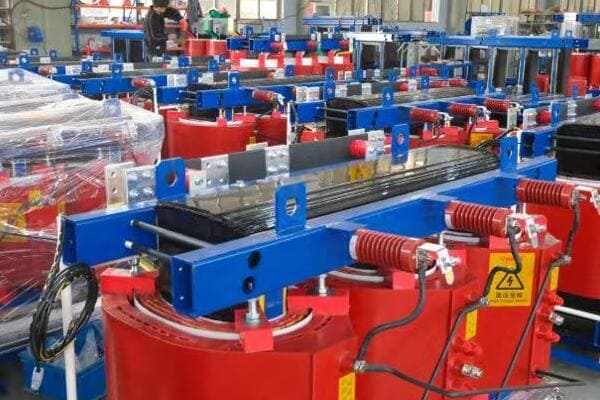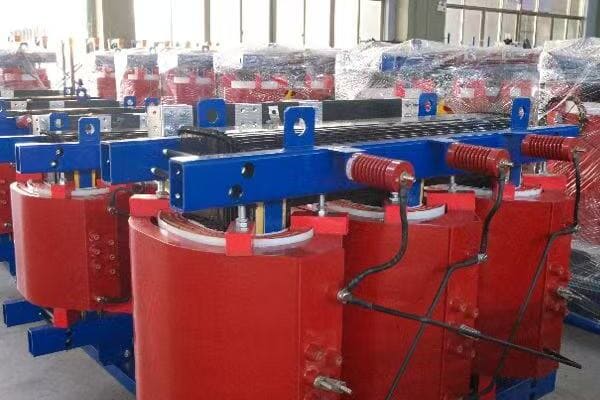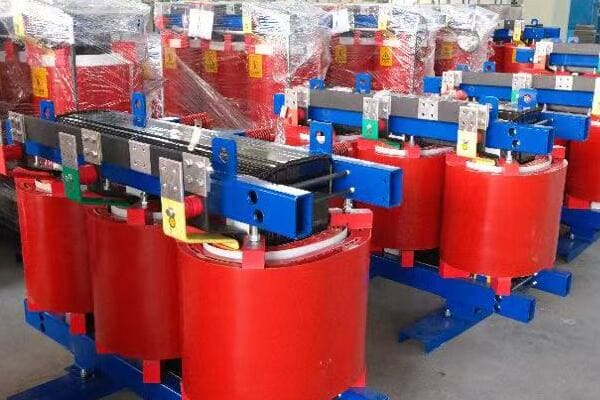Power Transformer vs Distribution Transformer: Key Differences in Voltage, Capacity, and Application?
Are you struggling to understand the differences between power and distribution transformers? You’re not alone. Many engineers and project managers find it challenging to choose the right transformer for their specific needs. But what if you could easily distinguish between these two crucial components of our electrical grid?
Power transformers handle high-voltage transmission over long distances, while distribution transformers step down voltage for local use. They differ in capacity, location, and load behavior. Understanding these differences is essential for selecting the right transformer in utility, commercial, or industrial projects.
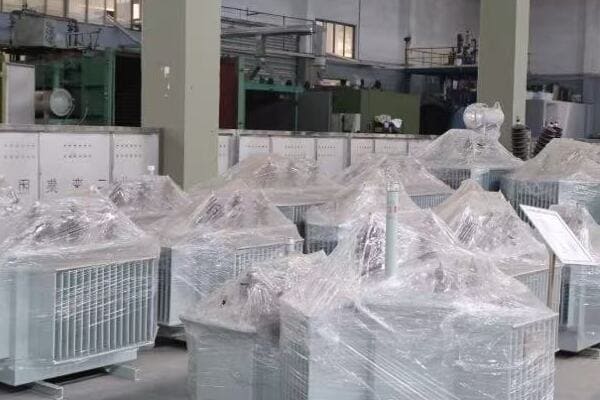
In this comprehensive guide, I’ll walk you through the key differences between power and distribution transformers. Whether you’re working on a large-scale utility project or a local power distribution system, this article will equip you with the knowledge to make informed decisions about transformer selection.
What Is a Power Transformer?
Have you ever wondered how electricity from power plants reaches our cities over long distances? Power transformers play a crucial role in this process, but what exactly are they, and how do they function in our electrical grid?
A power transformer is a high-capacity, high-voltage device used in electrical transmission systems. It typically operates at voltages between 33kV and 765kV, handling large power capacities from 1000kVA to 1000MVA. Power transformers are essential in step-up applications at power plants and step-down operations at primary substations.
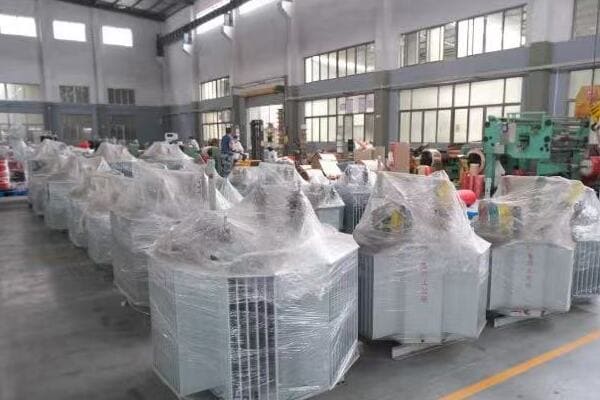
Understanding Power Transformers in Depth
Let’s explore the key aspects of power transformers:
- Voltage Levels and Capacity
- Functions and Applications
- Design and Cooling Systems
- Efficiency Characteristics
Voltage Levels and Capacity
Power transformers operate at the highest voltage levels in our electrical systems:
- Typical voltage range: 33kV to 765kV
- Capacity can range from 1000kVA to 1000MVA
I once worked on a project involving a 500kV power transformer for a major transmission line. The sheer size and complexity of the unit were awe-inspiring, highlighting the critical role these devices play in our power infrastructure.
Functions and Applications
Power transformers serve several crucial functions:
- Step-up transformers at power plants: Increase generator voltage for long-distance transmission
- Step-down transformers at primary substations: Reduce transmission voltages for sub-transmission or distribution networks
- Interconnection between different voltage levels in the grid
Design and Cooling Systems
The design of power transformers is optimized for high efficiency and reliability:
- Core: Often made of high-grade silicon steel to minimize losses
- Windings: Typically copper, designed for high current-carrying capacity
- Cooling: Usually oil-immersed with advanced cooling systems like ONAN (Oil Natural Air Natural) or OFAF (Oil Forced Air Forced)
During a recent substation upgrade, we implemented an OFAF cooling system for a large power transformer. This choice significantly improved its capacity to handle peak loads during hot summer months.
Efficiency Characteristics
Power transformers are designed for high efficiency under specific conditions:
- Optimized for constant, high loads
- Efficiency typically peaks at 80-90% of rated load
- Low load operation can lead to reduced efficiency
Here’s a quick overview of power transformer characteristics:
| Characteristic | Typical Range/Type |
|---|---|
| Voltage | 33kV – 765kV |
| Capacity | 1000kVA – 1000MVA |
| Efficiency | 99%+ at optimal load |
| Cooling System | ONAN, ONAF, OFAF |
| Load Profile | Constant, high load |
Understanding the characteristics of power transformers is crucial for grid planning and large-scale power distribution projects. In my experience, the selection of the right power transformer can significantly impact the overall efficiency and reliability of a transmission system. Whether you’re working on a new power plant connection or upgrading a major substation, considering these factors will help ensure your power transformer meets the demands of your high-voltage application.
What Is a Distribution Transformer?
Have you ever wondered how the high-voltage electricity in power lines is converted to the usable voltage in our homes and businesses? This is where distribution transformers come into play. But what exactly are these devices, and how do they differ from their larger counterparts?
A distribution transformer is a type of transformer used to convert medium-voltage power to lower voltages suitable for end-user consumption. Typically operating in the range of 11kV to 33kV on the primary side and stepping down to 400V/230V, these transformers are the final link in the electrical distribution chain before power reaches consumers.
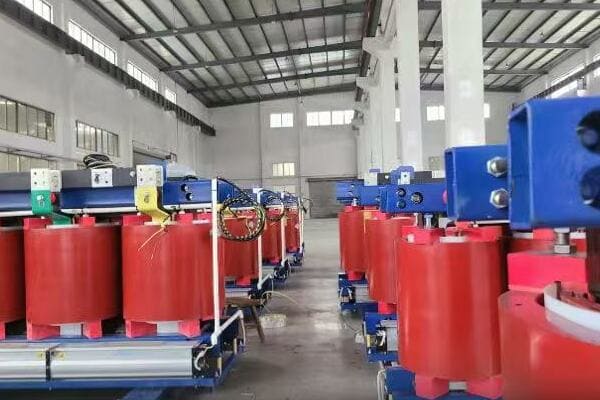
Diving Deeper into Distribution Transformers
Let’s explore the key aspects of distribution transformers:
- Voltage Levels and Capacity
- Functions and Applications
- Design Features
- Efficiency and Load Characteristics
Voltage Levels and Capacity
Distribution transformers operate at the lower end of the voltage spectrum:
- Primary voltage typically ranges from 11kV to 33kV
- Secondary voltage usually 400V/230V for three-phase and single-phase supply
- Capacity generally ranges from 25kVA to 2500kVA
I once worked on a project to upgrade the power supply in a small town. We installed several 500kVA distribution transformers to replace older, less efficient units. The improvement in power quality and reliability was immediately noticeable to the residents.
Functions and Applications
Distribution transformers serve several crucial functions:
- Step-down voltage for local power distribution
- Provide the final voltage transformation before end-user consumption
- Maintain voltage stability in local grids
Design Features
These transformers are designed for versatility and ease of maintenance:
- Often dry-type or filled with biodegradable oils for environmental safety
- Compact design to fit in space-constrained areas
- Built to withstand outdoor conditions (for pole and pad-mounted types)
During a recent project for a shopping center, we opted for a cast resin dry-type distribution transformer. This choice eliminated fire risks associated with oil-filled units and simplified the installation process in the confined electrical room.
Efficiency and Load Characteristics
Distribution transformers are optimized for variable loads:
- Designed to maintain good efficiency across a range of load conditions
- Often equipped with tap changers for voltage adjustment
- Efficiency is crucial as these units operate 24/7
Here’s a quick overview of distribution transformer characteristics:
| Characteristic | Typical Range/Type |
|---|---|
| Primary Voltage | 11kV – 33kV |
| Secondary Voltage | 400V/230V |
| Capacity | 25kVA – 2500kVA |
| Efficiency | 97-99% at varying loads |
| Cooling System | AN (Air Natural), ONAN |
| Load Profile | Fluctuating |
Understanding distribution transformers is essential for anyone involved in local power distribution or building electrical systems. In my experience, choosing the right distribution transformer can significantly impact energy efficiency and power quality for end-users. Whether you’re planning a new residential development or upgrading a commercial building’s power supply, considering these factors will help ensure your distribution transformer meets the diverse needs of modern power consumers.
Voltage Levels and Typical Capacity Comparison?
Are you finding it challenging to compare the voltage levels and capacities of power and distribution transformers? You’re not alone. Many professionals in the electrical industry struggle to clearly articulate these differences. But what if you had a clear, side-by-side comparison to help you understand and explain these crucial distinctions?
Power transformers typically operate at high voltages (33kV-765kV) with capacities ranging from 1000kVA to 1000MVA, optimized for efficiency under full load. Distribution transformers handle lower voltages (11kV-400V) with capacities between 25kVA and 2500kVA, designed for efficiency under variable loads. This difference in voltage and capacity reflects their distinct roles in the power system.
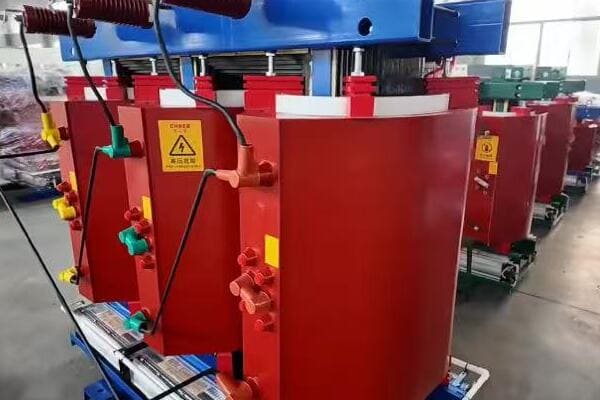
Detailed Comparison of Transformer Voltage and Capacity
Let’s break down the key differences in a comprehensive table:
| Parameter | Power Transformer | Distribution Transformer |
|---|---|---|
| Voltage Level | 33kV – 765kV | 11kV – 400V |
| Capacity Range | 1000kVA – 1000MVA | 25kVA – 2500kVA |
| Efficiency Focus | High under full load | High under partial load |
| Load Type | Constant | Variable |
Voltage Level Differences
The voltage levels handled by these transformers reflect their roles in the power system:
- Power Transformers: Handle bulk power at high voltages for transmission
- Distribution Transformers: Deliver power at usable voltages to end consumers
I once worked on a project that involved both types. We used a 230kV/66kV power transformer at the main substation and multiple 11kV/400V distribution transformers to supply a large industrial park. The contrast in voltage levels was striking and highlighted the distinct roles of each transformer type.
Capacity Range Comparison
The capacity ranges of these transformers are tailored to their applications:
- Power Transformers: Large capacities for handling bulk power
- Distribution Transformers: Smaller capacities suited for local distribution needs
During a recent grid modernization project, we had to carefully consider these capacity differences. The power transformers at the substation level were sized for the maximum expected load of the entire region, while the distribution transformers were selected based on the specific needs of individual neighborhoods or industrial zones.
Efficiency and Load Characteristics
The efficiency profiles of these transformers are optimized for their typical operating conditions:
- Power Transformers: Designed for high efficiency under constant, high loads
- Distribution Transformers: Optimized for good efficiency across varying load conditions
Here’s a more detailed look at efficiency characteristics:
| Aspect | Power Transformer | Distribution Transformer |
|---|---|---|
| Peak Efficiency | At 80-90% of rated load | Across a wider load range |
| Low Load Efficiency | Can be lower | Generally better |
| Load Fluctuation Handling | Less optimal | Designed for variability |
In my experience, understanding these voltage and capacity differences is crucial for proper system design and equipment selection. For instance, in a recent urban development project, we had to carefully balance the need for high power capacity with the requirement for flexible, efficient distribution. This led us to choose a high-capacity power transformer for the main substation, complemented by a network of smaller, more adaptable distribution transformers throughout the development.
These distinctions in voltage levels and capacities between power and distribution transformers are not just academic; they have real-world implications for system design, energy efficiency, and project costs. Whether you’re planning a large-scale power transmission project or a local distribution network, keeping these differences in mind will help you make informed decisions and ensure your power system is optimized for its specific requirements.
Installation Environments: Substations vs Local Sites?
Are you grappling with the challenge of choosing the right installation environment for your transformers? The stark contrast between power transformer substations and local distribution sites can be confusing. But what if you could clearly understand how these different environments impact transformer selection and performance?
Power transformers are typically installed in large, dedicated substations with controlled environments and extensive safety measures. Distribution transformers, on the other hand, are found in diverse local sites like pole mounts, pad mounts, or indoor electrical rooms. These different installation environments reflect the distinct roles and requirements of each transformer type in the power distribution chain.
Comparing Installation Environments
Let’s explore the key differences in installation environments:
- Power Transformer Substations
- Distribution Transformer Local Sites
- Environmental Considerations
- Safety and Access Requirements
Power Transformer Substations
Power transformers are typically installed in large, dedicated facilities:
- Extensive space requirements for equipment and safety clearances
- Controlled environment with advanced cooling and fire suppression systems
- High security measures due to critical nature of equipment
I once worked on a major substation project where the power transformer installation area alone was the size of a football field. The complexity of the site, with its extensive bus bars, circuit breakers, and control systems, highlighted the specialized nature of these installations.
Distribution Transformer Local Sites
Distribution transformers are found in diverse, often space-constrained locations:
- Pole-mounted in residential areas
- Pad-mounted in commercial zones or residential developments
- Indoor installations in basements or dedicated electrical rooms of buildings
During a recent urban renewal project, we faced the challenge of integrating distribution transformers into a densely populated area. We opted for a mix of pad-mounted units in small green spaces and compact indoor units in building basements, showcasing the flexibility required in distribution transformer siting.
Environmental Considerations
The installation environment significantly impacts transformer design and operation:
| Aspect | Power Transformer Substation | Distribution Transformer Site |
|---|---|---|
| Weather Exposure | Limited (often indoor or sheltered) | Often fully exposed |
| Temperature Control | Sophisticated cooling systems | Passive cooling or basic fans |
| Noise Considerations | Less critical (isolated locations) | Crucial (often near residential areas) |
| Flood Risk | Elevated installations, extensive drainage | Varied (pole-mounted safe, pad-mounted at risk) |
In a coastal substation project, we had to implement advanced corrosion protection for the power transformers due to the salt-laden air. Conversely, for distribution transformers in the same region, we opted for stainless steel enclosures for pad-mounted units to ensure longevity in the harsh environment.
Safety and Access Requirements
Safety considerations vary significantly between these installation types:
-
Power Transformer Substations:
- Restricted access with multiple security layers
- Extensive safety clearances and fire suppression systems
- Specialized maintenance procedures and equipment
-
Distribution Transformer Sites:
- Often in public areas, requiring tamper-resistant designs
- Emphasis on public safety (e.g., locked enclosures, warning signs)
- Designed for easier access for maintenance and replacement
I recall a project where we retrofitted an urban substation with advanced security systems, including biometric access controls and 24/7 video surveillance. In contrast, for a residential area distribution transformer upgrade, our focus was on creating child-proof enclosures and integrating the units aesthetically into the neighborhood landscape.
Understanding these installation environment differences is crucial for proper planning and design of power systems. In my experience, the key to successful transformer installation lies in carefully considering not just the electrical requirements, but also the physical, environmental, and safety aspects of the installation site. Whether you’re working on a large substation or a local distribution project, these factors will significantly impact your choice of transformer and the overall success of your power distribution system.
Maintenance and Lifespan Considerations?
Are you wondering about the long-term implications of choosing between power and distribution transformers? Maintenance requirements and lifespan can significantly impact the total cost of ownership and reliability of your power system. But how do these factors differ between the two transformer types?
Power transformers typically have longer lifespans (40-60 years) but require more complex, specialized maintenance. Distribution transformers generally have shorter lifespans (20-30 years) but need simpler, more frequent maintenance. The maintenance strategies and lifespan expectations for each type significantly influence long-term operational costs and system reliability planning.
Comparing Maintenance and Lifespan Factors
Let’s explore the key differences in maintenance and lifespan considerations:
- Maintenance Frequency and Complexity
- Lifespan Expectations
- Factors Affecting Longevity
- Cost Implications Over Time
Maintenance Frequency and Complexity
The maintenance needs of power and distribution transformers differ significantly:
| Aspect | Power Transformer | Distribution Transformer |
|---|---|---|
| Frequency | Less frequent, more intensive | More frequent, less complex |
| Oil Testing | Annual or bi-annual comprehensive tests | Basic tests, often during installation and periodically |
| Cooling System | Regular checks and maintenance | Minimal or no cooling system maintenance |
| Expertise Required | Highly specialized technicians | General electrical maintenance staff |
I once managed a maintenance program for a large power transformer at a key substation. The annual maintenance involved a team of specialists and took several days, including comprehensive oil analysis, winding resistance measurements, and detailed insulation tests. In contrast, the maintenance for distribution transformers in the same network was often as simple as visual inspections and basic electrical tests, which could be completed in a few hours.
Lifespan Expectations
The expected operational life of transformers varies:
- Power Transformers: Typically 40-60 years with proper maintenance
- Distribution Transformers: Generally 20-30 years, though some may last longer
During a recent grid modernization project, we had to factor in these lifespan differences when planning for long-term infrastructure needs. We designed the main substation with power transformers expected to serve for half a century, while planning for periodic replacements of distribution transformers throughout the network.
Factors Affecting Longevity
Several factors influence the lifespan of transformers:
-
Load Profile:
- Power Transformers: Often operate at steady, high loads
- Distribution Transformers: Subject to more variable loads, potentially impacting lifespan
-
Environmental Conditions:
- Power Transformers: Usually in controlled environments
- Distribution Transformers: Often exposed to weather extremes
-
Maintenance Quality:
- Power Transformers: Benefit significantly from rigorous maintenance
- Distribution Transformers: Simpler maintenance, but frequency is crucial
-
Design and Manufacturing Quality:
- Both types: Higher quality materials and construction lead to longer lifespans
In my experience, the impact of these factors can be substantial. I recall a case where a poorly maintained distribution transformer in a coastal area failed after just 12 years due to corrosion, while a well-maintained unit in a similar environment was still operating efficiently after 25 years.
Cost Implications Over Time
The long-term cost considerations differ between the two types:
| Aspect | Power Transformer | Distribution Transformer |
|---|---|---|
| Initial Cost | Higher | Lower |
| Maintenance Cost | Higher per instance, less frequent | Lower per instance, more frequent |
| Replacement Cost | Very high, significant project | Moderate, more manageable |
| Downtime Impact | Potentially severe, wide-ranging | Usually localized, shorter duration |
Here’s a simplified cost comparison over a 50-year period:
| Cost Factor | Power Transformer | Distribution Transformer |
|---|---|---|
| Initial Purchase | $1,000,000 | $50,000 x 5 units = $250,000 |
| Maintenance (annual avg) | $20,000 x 50 years = $1,000,000 | $2,000 x 50 years x 5 units = $500,000 |
| Replacement | None (assuming 50-year life) | $50,000 x 5 units x 1 replacement = $250,000 |
| Total | $2,000,000 | $1,000,000 |
Note: These figures are illustrative and can vary significantly based on specific circumstances.
In a recent long-term planning project for a utility company, we used a similar cost model to demonstrate that while power transformers had higher upfront and maintenance costs, their longer lifespan and the avoided costs of frequent replacements made them more economical for high-capacity, critical installations over a 50-year horizon.
Understanding these maintenance and lifespan considerations is crucial for effective long-term planning and budgeting in power systems. In my experience, the key to optimizing transformer lifecycle costs lies in:
- Implementing robust preventive maintenance programs
- Considering environmental factors in transformer selection and siting
- Balancing initial costs with long-term operational expenses
- Planning for eventual replacements, especially for distribution transformers
By carefully considering these factors, power system planners and operators can make informed decisions that balance reliability, cost-effectiveness, and long-term sustainability in their transformer choices and maintenance strategies.
Application Examples: Where Each Transformer Fits Best?
Are you unsure about which type of transformer is best suited for your specific project? The choice between power and distribution transformers can significantly impact the efficiency and reliability of your electrical system. But how do you know which one fits best in different scenarios?
Power transformers are ideal for high-voltage transmission systems, large industrial facilities, and utility-scale renewable energy projects. Distribution transformers excel in local power delivery for residential areas, commercial buildings, and small to medium-sized industrial applications. Understanding these application differences is crucial for optimal system design and performance.
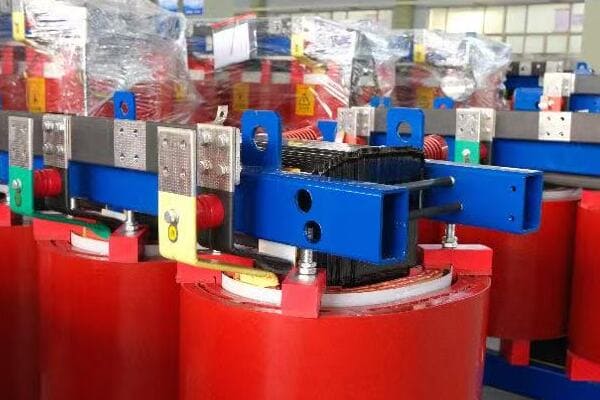
Exploring Ideal Applications for Each Transformer Type
Let’s examine specific scenarios where each transformer type shines:
- Power Transformer Applications
- Distribution Transformer Applications
- Hybrid Scenarios
- Emerging Application Trends
Power Transformer Applications
Power transformers are best suited for:
-
Utility-Scale Power Generation:
- Large power plants (coal, nuclear, hydroelectric)
- Example: A 500 MVA, 22kV/400kV transformer at a nuclear power plant
-
High-Voltage Transmission Systems:
- Long-distance power transmission
- Example: 400kV/220kV transformer at a major grid interconnection point
-
Large Industrial Facilities:
- Steel mills, large chemical plants
- Example: 100 MVA, 220kV/33kV transformer for an aluminum smelter
-
Utility-Scale Renewable Energy:
- Large solar farms, offshore wind farms
- Example: 200 MVA, 33kV/400kV transformer for a 500 MW solar farm
I once worked on a project for a major hydroelectric dam where we installed multiple 300 MVA, 13.8kV/500kV step-up transformers. These massive units were crucial in transmitting the generated power over hundreds of miles to urban load centers.
Distribution Transformer Applications
Distribution transformers are typically used in:
-
Residential Areas:
- Neighborhood power distribution
- Example: 500 kVA, 11kV/400V transformer serving a suburban block
-
Commercial Buildings:
- Office complexes, shopping centers
- Example: 2000 kVA, 33kV/400V transformer for a large office building
-
Small to Medium Industries:
- Manufacturing facilities, warehouses
- Example: 1500 kVA, 11kV/400V transformer for a food processing plant
-
Urban Infrastructure:
- Street lighting, traffic systems
- Example: 100 kVA, 11kV/400V transformer for a city block’s street lighting
During a recent smart city project, we deployed numerous 1000 kVA pad-mounted distribution transformers throughout the urban area. These units were crucial in powering everything from electric vehicle charging stations to smart traffic management systems.
Hybrid Scenarios
Some applications require a combination of both transformer types:
-
Large Data Centers:
- Power transformers for main supply
- Distribution transformers for internal power distribution
- Example: 50 MVA, 132kV/11kV power transformer feeding multiple 2500 kVA, 11kV/400V distribution units
-
University Campuses:
- Power transformer at campus substation
- Distribution transformers for individual buildings
- Example: 20 MVA, 66kV/11kV main transformer with various 11kV/400V units across campus
In a recent data center project, we implemented this hybrid approach. The main 40 MVA power transformer handled the incoming high voltage, while a network of 2000 kVA distribution transformers efficiently powered different sections of the facility, providing both the high capacity and the flexibility needed for this critical infrastructure.
Emerging Application Trends
New technologies are creating novel applications for both transformer types:
-
Renewable Energy Integration:
- Power transformers for large wind and solar farms
- Distribution transformers for local solar and small wind installations
-
Electric Vehicle Charging Infrastructure:
- Distribution transformers for local charging stations
- Power transformers for large-scale charging depots
-
Smart Grid Applications:
- Both types equipped with advanced monitoring and control capabilities
-
Energy Storage Systems:
- Integration with battery storage requiring both large and small-scale transformers
I recently consulted on a cutting-edge project combining a solar farm with grid-scale battery storage. We used a 100 MVA power transformer for the main grid connection, complemented by several 2500 kVA distribution transformers for the intricate power management system of the battery array.
Understanding these application scenarios is crucial for effective power system design. In my experience, the key to successful transformer application lies in:
- Carefully analyzing the specific power requirements of the project
- Considering future expansion and load growth
- Balancing efficiency, cost, and reliability needs
- Staying informed about emerging technologies and their impact on transformer applications
By thoughtfully matching transformer types to their ideal applications, engineers and project managers can ensure optimal performance, efficiency, and reliability in their power systems, whether for utility-scale projects or local distribution networks.
Summary Table: Power vs Distribution Transformer at a Glance?
Are you looking for a quick, comprehensive comparison between power and distribution transformers? It can be challenging to keep all the differences in mind, especially when making crucial decisions for your power system projects. But what if you had a clear, concise summary of all the key points we’ve discussed?
Power transformers handle high voltages (33kV-765kV) and large capacities (1000kVA-1000MVA) for transmission systems, while distribution transformers manage lower voltages (11kV-400V) and smaller capacities (25kVA-2500kVA) for local power delivery. They differ in efficiency focus, installation environments, maintenance needs, and lifespan, reflecting their distinct roles in the power grid.
Comprehensive Comparison Table
Let’s summarize the key differences in a detailed comparison table:
| Characteristic | Power Transformer | Distribution Transformer |
|---|---|---|
| Voltage Range | 33kV – 765kV | 11kV – 400V |
| Capacity | 1000kVA – 1000MVA | 25kVA – 2500kVA |
| Efficiency Focus | High under full load | High under partial load |
| Load Type | Constant, high load | Variable load |
| Installation Site | Large substations | Local sites (pole, pad, indoor) |
| Cooling System | ONAN, ONAF, OFAF | AN, ONAN |
| Maintenance | Complex, less frequent | Simpler, more frequent |
| Lifespan | 40-60 years | 20-30 years |
| Cost | High initial, high maintenance | Lower initial, moderate maintenance |
| Size and Weight | Large and heavy | Compact and lighter |
| Core Design | Larger, more complex | Simpler, standardized |
| Winding Material | Typically copper | Copper or aluminum |
| Insulation | Oil and paper (usually) | Various (oil, dry-type, resin) |
| Monitoring | Continuous, advanced | Basic, often manual checks |
| Typical Applications | Power plants, grid transmission | Residential, commercial distribution |
Key Insights from the Comparison
-
Voltage and Capacity:
The most obvious difference lies in the voltage and capacity ranges, reflecting their distinct roles in the power system. -
Efficiency and Load Profiles:
Power transformers are optimized for constant, high loads typical in transmission systems. Distribution transformers maintain efficiency under varying load conditions common in end-user applications. -
Installation and Environment:
Power transformers require large, specialized installations, while distribution transformers are more versatile in their placement options. -
Maintenance and Lifespan:
The longer lifespan of power transformers comes with more complex maintenance needs, contrasting with the simpler but more frequent maintenance of distribution transformers. -
Cost Considerations:
While power transformers have higher upfront and maintenance costs, their longer lifespan can make them more economical for high-capacity, critical installations over time.
In my experience, understanding these differences is crucial for proper system design and equipment selection. I recall a project where a client initially considered using multiple large distribution transformers for a high-capacity industrial application. After reviewing a comparison like this, we realized that a single power transformer would be more efficient and cost-effective in the long run, despite the higher initial investment.
This summary table serves as a quick reference guide, but remember that real-world applications often involve nuances that may not fit neatly into these categories. Always consider the specific requirements of your project and consult with experts when making final decisions on transformer selection.
By keeping these key differences in mind, you’ll be better equipped to make informed decisions in your power system designs, whether you’re working on large-scale transmission projects or local distribution networks.
Conclusion
Power and distribution transformers serve distinct roles in the electrical grid, differing in voltage levels, capacity, efficiency profiles, and application scenarios. Understanding these differences is crucial for selecting the right transformer for specific project needs, ensuring optimal performance, reliability, and cost-effectiveness in power system design and operation.
Remember, at chbeb-ele, we’re not just sharing information – we’re empowering you to be part of the solution in creating a secure, clean, and efficient energy future. Let’s continue this journey together.
Recent Post
Quick Message
Request A free quote
We'd like to work with you
- +86 15558785111
- chbebgroup@chbebpower.com
- +86 15558785111
What We Do
CHINA BEI ER BIAN (CHBEB) GROUP, with 218 million in registered capital, originated from Beijing Beierbian Transformer Group. Headquartered in Beijing for R&D, it operates major production bases in Nanjing and Yueqing, producing high-quality products.
Latest Post
Latest Product
Contact Us
- +86 15558785111
- chbebgroup@chbebpower.com
- +86 15558785111
BeiJing
No 3,RongJing East Road,BeiJing Economic Technological Development Area,BeiJing,China
JiangSu
No 7️Xiangfeng Road,Jiangning,NanJing,JiangSu,China
WenZhou
No.211, Wei 16 Road, Industrial Zone, Yueqing, Wenzhou, Zhejiang, China.
XiangYang Industrial Zone ,YueQing,WenZhou,ZheJiang,China

